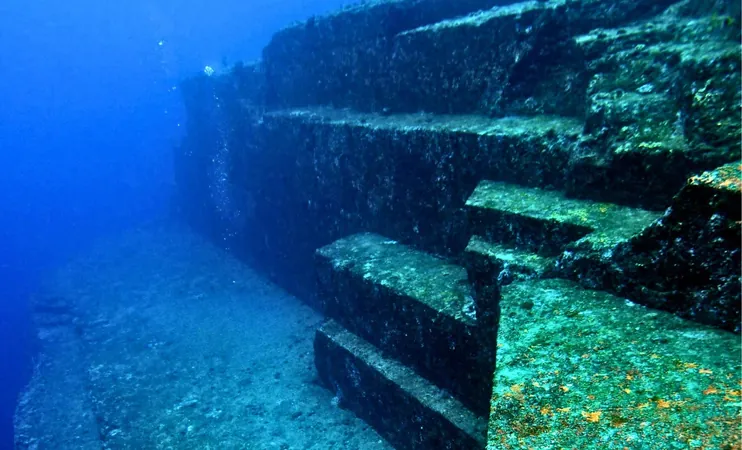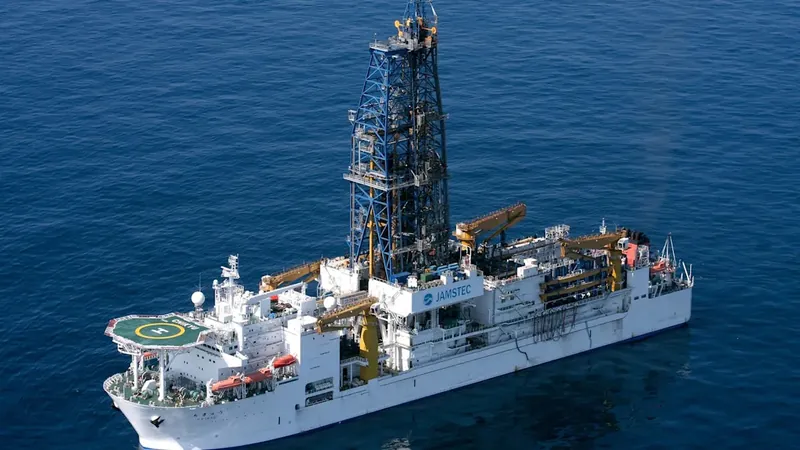
Unveiling the Mystery of Japan’s 10,000-Year-Old Underwater 'Pyramid'
2025-06-05
Author: Emma
A Hidden Marvel Beneath the Waves
Off the picturesque Yonaguni Island in Japan lies a submerged enigma that has baffled researchers and divers since its discovery nearly forty years ago. This underwater structure, measuring an astonishing 150 meters in length, 40 meters in width, and rising 27 meters high, captivates with its sharp angles and terraced levels. The big question remains: Is this a natural phenomenon sculpted by Mother Nature, or a long-lost relic of an ancient civilization?
The Monument’s Remarkable Discovery
The saga of the Yonaguni Monument began in 1986 when local diver Kihachiro Aratake was on a quest to find new dive spots. What he stumbled upon was no ordinary site; instead, he discovered a large, precisely constructed stone formation. Unlike typical underwater rocks, this monument displayed flat surfaces and geometric shapes, igniting a fierce debate about its origins among locals and academics alike.
Ancient Architects or Nature’s Masterpiece?
Leading the charge for the human-origin theory is Professor Masaaki Kimura, a marine geologist from the University of the Ryukyus. After years of diving and analyzing the monument, Kimura emphasizes that the design is too uniform to have occurred naturally. He speculates that this striking structure could date back a whopping 10,000 years, potentially serving as a sacred site or city during the last Ice Age when sea levels were significantly lower.
Supporting his claim, Kimura asserts he has found adjacent formations resembling roads, castles, and animal carvings, further fueling the possibility of human artistry. But does this evidence hold up against the natural formation argument?
The Geological Perspective
Critics, including several prominent geologists, argue that the Yonaguni Monument may simply be a masterpiece of nature. Given its location near a major fault line, they contend that seismic activity could account for the monument's angular features and straight fractures. Additionally, the composition of the structure, primarily sandstone, raises questions, as this soft material can easily be shaped and eroded by ocean currents, leading to natural formations that mimic human structures.
An Ongoing Enigma
One of the central challenges in clarifying the monument's origins is the absence of conclusive evidence. No ancient artifacts or tools have been retrieved from the site, nor are there local legends or historical accounts that hint at a lost civilization linked to the site. This lack of material evidence leaves room for speculation and debate.
Situated 25 meters beneath the surface, the monument adds yet another layer of intrigue. During the last Ice Age, what is now submerged land would have been exposed. If crafted by human hands, it would have existed during a time when sea levels were low, only to be engulfed by rising waters.
Conclusion: A Mystery That Captivates All
As scientists continue to investigate, the Yonaguni Monument remains one of the world’s most captivating unsolved mysteries. Will it ever reveal its secrets, or will it continue to enchant and perplex those who seek to uncover the truth behind its origins?









 Brasil (PT)
Brasil (PT)
 Canada (EN)
Canada (EN)
 Chile (ES)
Chile (ES)
 Česko (CS)
Česko (CS)
 대한민국 (KO)
대한민국 (KO)
 España (ES)
España (ES)
 France (FR)
France (FR)
 Hong Kong (EN)
Hong Kong (EN)
 Italia (IT)
Italia (IT)
 日本 (JA)
日本 (JA)
 Magyarország (HU)
Magyarország (HU)
 Norge (NO)
Norge (NO)
 Polska (PL)
Polska (PL)
 Schweiz (DE)
Schweiz (DE)
 Singapore (EN)
Singapore (EN)
 Sverige (SV)
Sverige (SV)
 Suomi (FI)
Suomi (FI)
 Türkiye (TR)
Türkiye (TR)
 الإمارات العربية المتحدة (AR)
الإمارات العربية المتحدة (AR)